The ARM vs x86 Wars Have Begun: In-Depth Power Analysis of Atom, Krait & Cortex A15
by Anand Lal Shimpi on January 4, 2013 7:32 AM EST- Posted in
- Tablets
- Intel
- Samsung
- Arm
- Cortex A15
- Smartphones
- Mobile
- SoCs
Krait: WebXPRT 2013 Community Preview 1
I also included Principled Technologies' new HTML5/js web test suite WebXPRT in our power analysis. Intel and Qualcomm remain quite close in these tests. I didn't run the Qualcomm tests at the same time as the Intel tests the charts graphs aren't perfectly aligned, as a result it looks like Intel took longer to complete the test when in reality the opposite is true. Once again at the platform level, the W510 beats the XPS 10, but at the CPU level Krait manages to do better than Atom. Looking at GPU power consumption alone, Intel/Imagination are once again more power efficient. As 3D performance doesn't matter much here, the Qualcomm/Adreno 225 3D performance advantage does nothing - it just costs more power.
Once again there's no contest when we include Tegra 3 in the comparison. Atom/Krait are in a different league. It'll be interesting to see how Tegra 4 will do here...
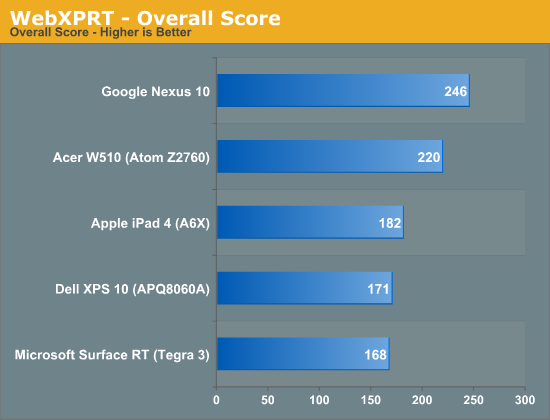
TouchXPRT 2013
As our first native client test, we turned to PT's TouchXPRT 2013. As there is no "run-all" functionality in the TouchXPRT benchmark, we had to present individual power curves for each benchmark. Unlike the previous tests where Qualcomm was consistently slower than Intel, many of the TouchXPRT tests show the two competitors performing quite similarly. This gives us a better idea of how these two fare when performance is equal. For the most part, Acer/Intel seem to win at the platform and GPU levels, while Qualcomm takes the win at the CPU level. Once again, it's not abundantly clear to me how much of Qualcomm's CPU core power advantage is due to the fact that we're not taking into account power consumption of the L2 cache.


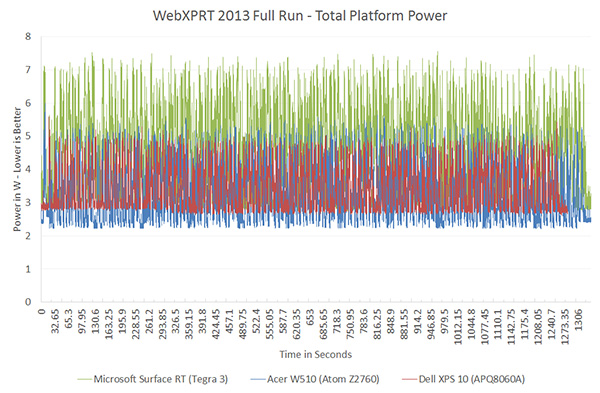
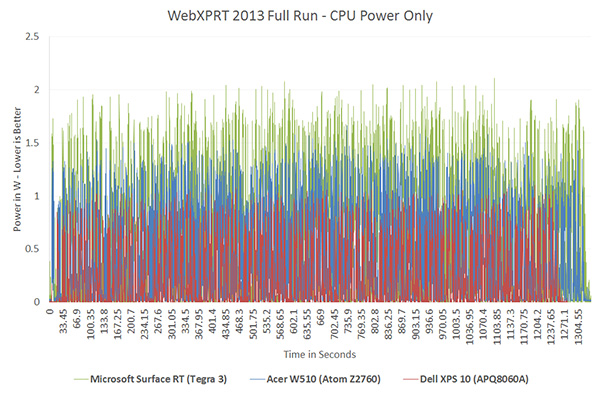
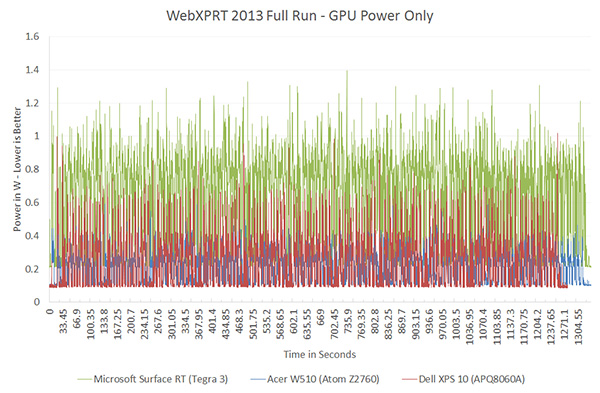
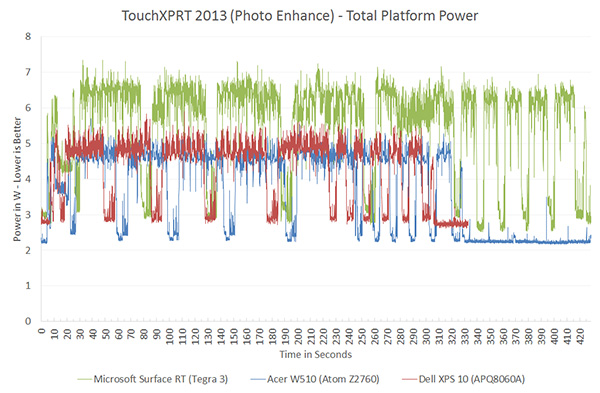
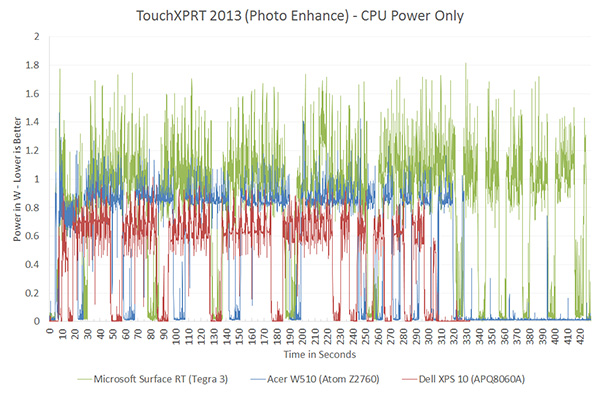
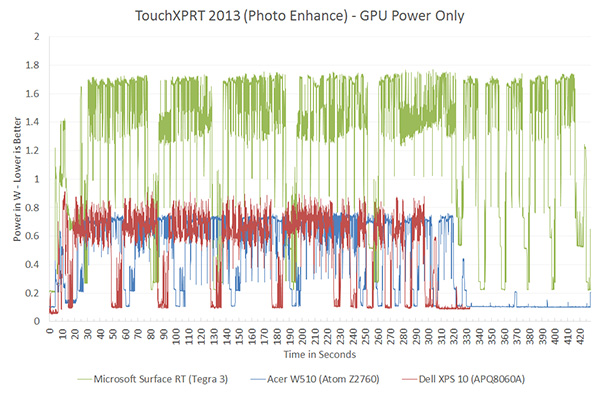
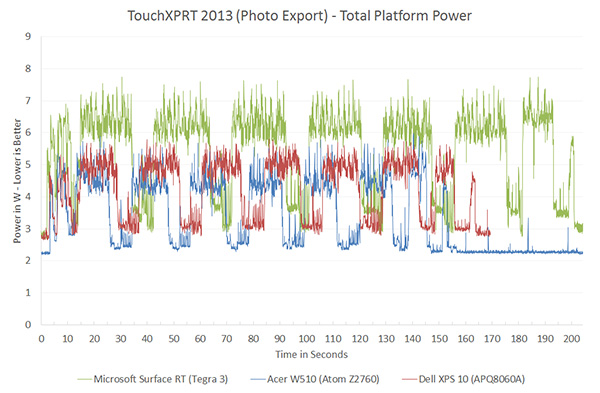
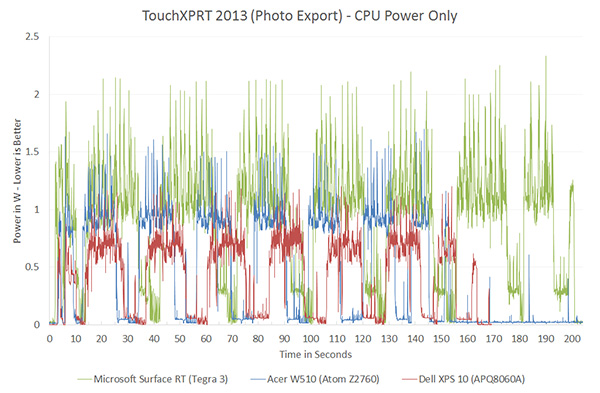

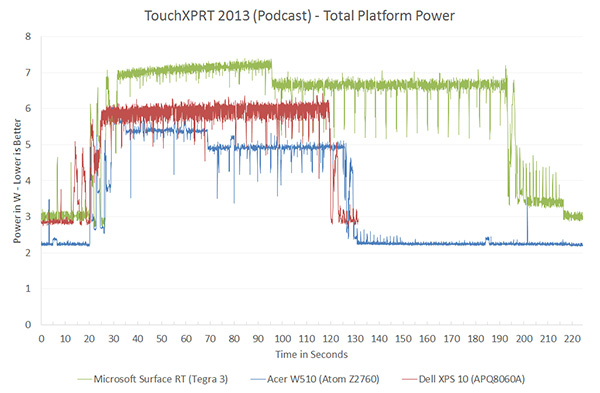
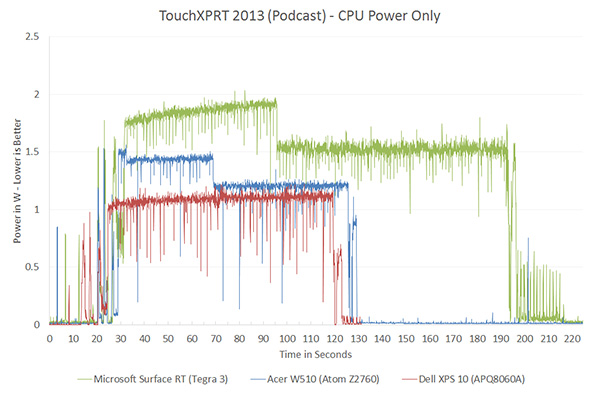
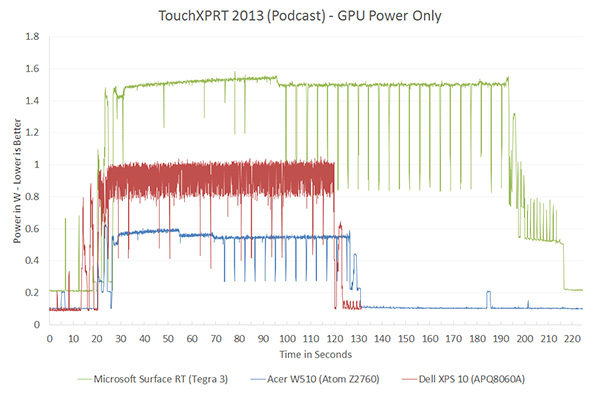
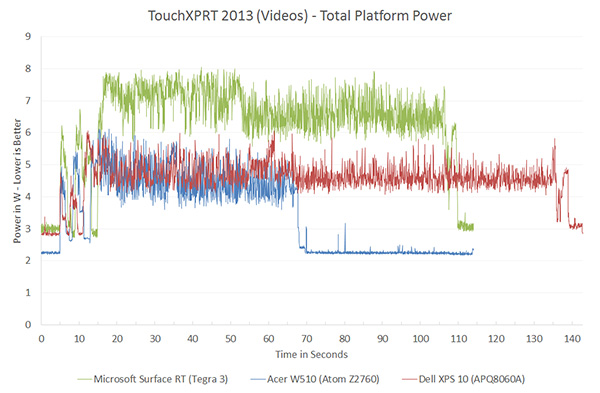
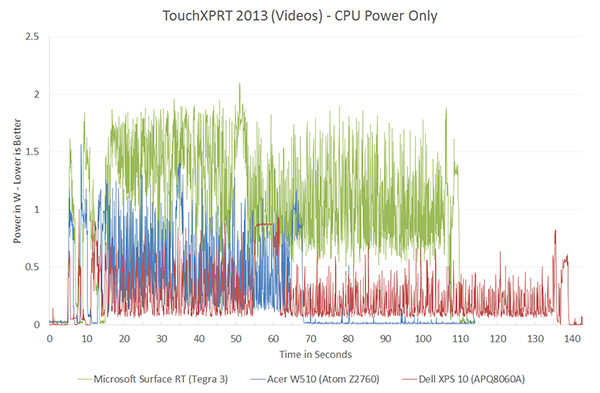
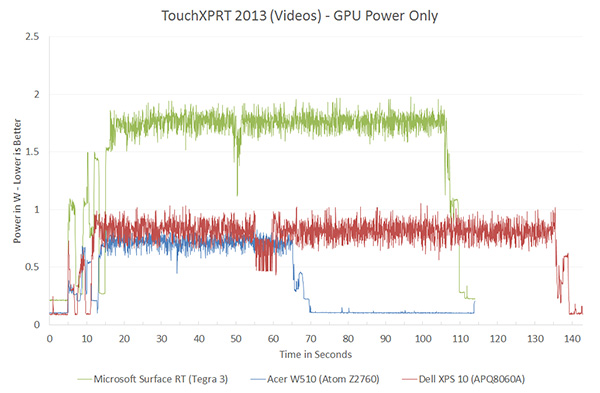








140 Comments
View All Comments
powerarmour - Friday, January 4, 2013 - link
So yes, finally confirming what anyone with half a brain knows, competitive ARM SoC's use less power.apinkel - Friday, January 4, 2013 - link
I'm assuming you are kidding.Atom is roughly equivalent to (dual core) Krait in power draw but has better performance.
The A15 is faster than either krait or the atom but it's power draw is too much to make it usable in a smartphone (which is I'm assuming why qualcomm had to redesign the A15 architecture for krait to make it fit into the smartphone power envelope).
The battle I still want to see is quad core krait and atom.
ImSpartacus - Friday, January 4, 2013 - link
Let me make sure I have this straight. Did Qualcomm redesign A15 to create Krait?djgandy - Friday, January 4, 2013 - link
No. Qualcomm create their own designs from scratch. They have an Instruction Set licence for ARM but they are arm "clones"apinkel - Friday, January 4, 2013 - link
Sorry, yeah, I could have worded that better.But in any case the comment now has me wondering if I'm off base in my understanding of how Qualcomm does what it does...
I've been under the impression that Qualcomm took the ARM design and tweaked it for their needs (instead of just licensing the instruction set and the full chip design top to bottom). Yeah/Nay?
fabarati - Friday, January 4, 2013 - link
Nay.They do what AMD does, they license the instruction set and create their own cpus that are compatible with the ARM ISA's (in Krait's case, the ARMv7). That's also what Apple did with their Swift cores.
Nvidia tweaked the Cortex A9 in the Tegra 2, but it was still a Cortex A9. Ditto for Samsung, Hummingbird and the Cortex A8.
designerfx - Friday, January 4, 2013 - link
do I need to remind you that the Tegra 3 has disabled cores on the RT? Using an actual android device with Tegra 3 would show better results.madmilk - Friday, January 4, 2013 - link
The disabled 5th core doesn't matter in loaded situations. During idle, screen power dominates, so it still doesn't really matter. About all you'll get is more standby time, and Atom seems to be doing fine there.designerfx - Friday, January 4, 2013 - link
The core allows a lot of different significant things - so in other words, it's extremely significant, including in high load situations as well.That has nothing to do with the Atom. You get more than standby time.
designerfx - Friday, January 4, 2013 - link
also, during idle the screen is off, usually after whatever amount of time the settings are set for. Which is easily indicated in the idle measurements. What the heck are you even talking about?